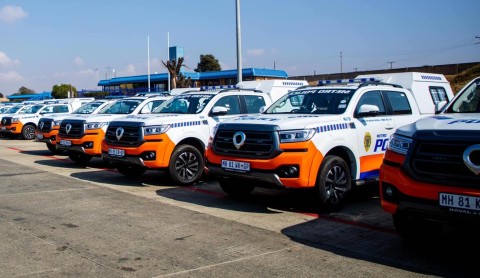California's Firefighting Revolution: Tech to Tackle Blazes Like Never Before

California’s wildfires have become increasingly frequent and intense, driven by climate change and years of accumulated dry brush. Traditional firefighting methods are struggling to keep pace with the escalating danger. This has spurred a surge in technological development aimed at providing firefighters with a decisive advantage.
The future of firefighting isn't just about manpower; it's about intelligent machinery. Next-generation fire trucks are being equipped with advanced sensors and data analytics, allowing them to navigate treacherous terrain and identify optimal water delivery points. Coupled with this are 'smart nozzles' – devices that can automatically adjust water flow and spray patterns based on real-time conditions, minimizing water waste and maximizing impact. These nozzles can detect the heat signature of the fire and adjust accordingly, ensuring the most effective use of precious resources.
Protecting the firefighters themselves is paramount. New advancements in material science are producing uniforms with 'intelligent fabrics' that can monitor vital signs, detect heat exposure, and even provide alerts to the wearer and command centers. These fabrics can also offer enhanced protection against flames and smoke inhalation, significantly improving firefighter safety and endurance.
Imagine a fleet of pilot-less helicopters tirelessly dropping water and retardant on wildfires, day and night. This isn't science fiction; it's rapidly becoming a reality. Drones and autonomous helicopters offer several key advantages: they can access remote and dangerous areas, operate continuously without fatigue, and provide real-time aerial reconnaissance. AI algorithms guide these aircraft, optimizing flight paths and water delivery for maximum effectiveness. The use of AI also allows for predictive fire spread modelling, enabling proactive deployment of resources.
AI is the common thread weaving through all these technological advancements. It's used to analyze vast datasets of weather patterns, terrain conditions, and historical fire behavior to predict fire spread, identify high-risk areas, and optimize resource allocation. AI-powered systems can also rapidly assess damage after a fire, helping emergency responders prioritize their efforts and allocate aid effectively.
California's 'wildfire moonshot' represents a significant shift towards a data-driven approach to firefighting. While these technologies are still in their early stages of deployment, the potential to save lives, protect communities, and mitigate the devastating impact of wildfires is immense. Continued investment in research and development, coupled with effective training and integration of these tools into existing firefighting strategies, will be crucial to ensuring a safer future for California and beyond. The integration of machine learning and predictive analytics will only further refine these capabilities, leading to even more effective and proactive fire management strategies.






